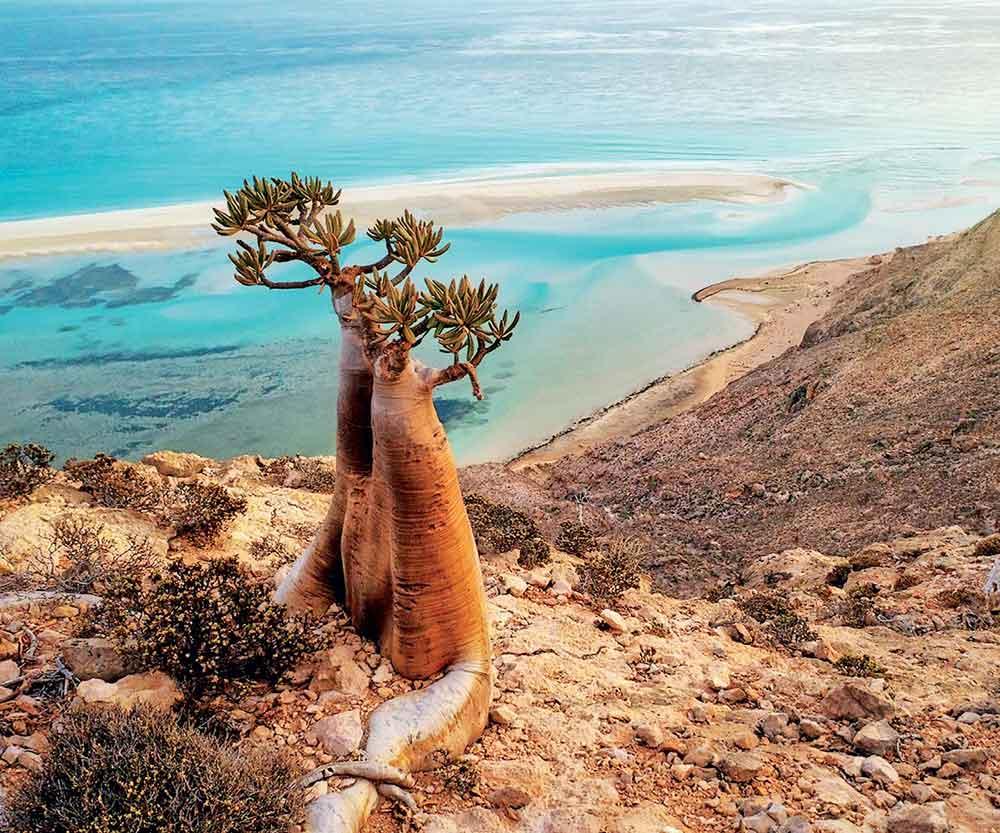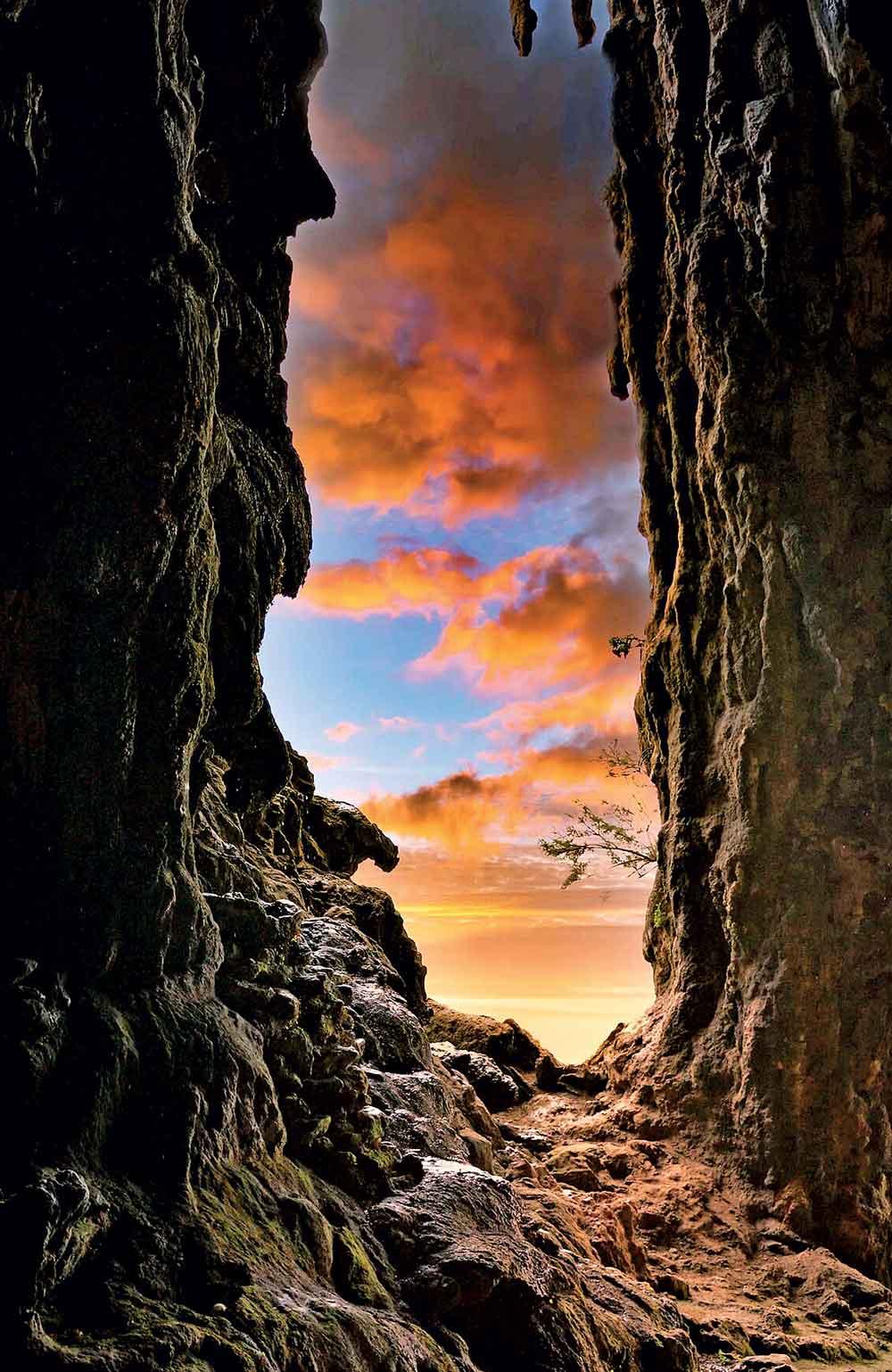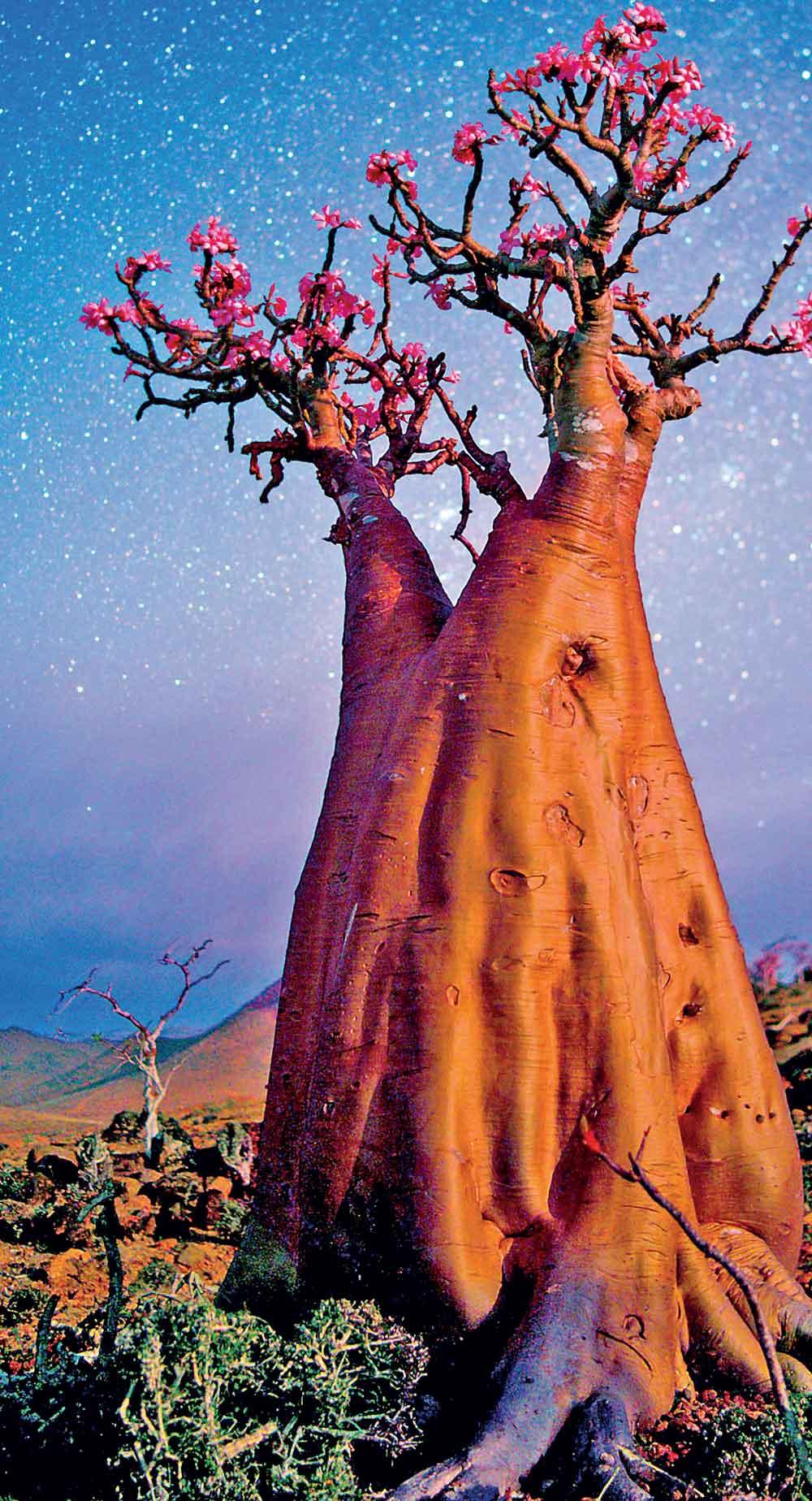There’s a place on Earth where the trees look like they were drawn by Dr. Seuss, where the landscape resembles a distant planet, and where 37% of the plants exist nowhere else on Earth. It's not a CGI backdrop from a sci-fi movie. It's real. It’s ancient. And chances are, you've never heard of it.
Welcome to Socotra Island Yemen’s remote and magical gem in the Arabian Sea. Often dubbed “the most alien place on Earth,” Socotra stirs the imagination in ways no travel brochure can. Here, time feels slower. Nature feels louder. And reality… feels optional.
Socotra is part of an archipelago of four islands in the Indian Ocean, roughly 380 kilometers south of the Arabian Peninsula. It belongs to Yemen, though its geographical position makes it feel like it slipped between continents; a forgotten shard of Gondwana, the prehistoric supercontinent.
 Because of its isolation both geographically and politically Socotra remained a mystery to the outside world for centuries. But for biologists and adventurous travelers, it’s a holy grail.
Because of its isolation both geographically and politically Socotra remained a mystery to the outside world for centuries. But for biologists and adventurous travelers, it’s a holy grail.
Think of Socotra as the Galápagos of the Indian Ocean. Over 700 endemic species of flora and fauna exist only on this island. That’s more than Madagascar or Hawaii in some categories and all packed into an island the size of Cornwall or Connecticut.
One of the stars of this biological treasure trove is the Dragon’s Blood Tree (Dracaena cinnabari). It looks like a giant mushroom crossed with an umbrella its umbrella-shaped canopy designed to capture moisture from the air and funnel it toward its roots. When cut, it bleeds a crimson sap, once prized by medieval alchemists as “dragon’s blood” for its supposed magical properties.
Other mind-bending flora include:
- The Desert Rose, a bulbous tree with a thick trunk and delicate pink flowers, often called the “bottle tree” because of its shape.
- The Cucumber Tree, which, as the name implies, grows literal cucumbers on its branches.
- And over 200 bird species, some of which are found only on Socotra.
It’s a place where evolution played its own wild symphony, uninterrupted by humans for the most part.
The terrain of Socotra is just as strange as its biology. From white sand beaches that meet turquoise waters to jagged limestone cliffs and vast plateaus, it’s a world of stark contrasts.
In one direction, you’ll find:
- Hoq Cave, stretching 3 kilometers into the limestone mountains, filled with ancient stalactites, prehistoric drawings, and the echo of absolute silence.
- In another the Diksam Plateau, a sprawling highland covered in dragon’s blood trees, where goats perch impossibly on rocky outcrops.
Then there’s the Detwah Lagoon, a UNESCO-protected wetland home to herons, crabs, rays, and flamingos all surrounded by giant sand dunes that look more like Mars than Earth.
Photographers say the light here bends differently. Every shot is a postcard. Every step, a scene change.

Despite its surreal geography, Socotra is not uninhabited. Roughly 60,000 people live on the island, most of them semi-nomadic pastoralists and fishermen. The locals speak Soqotri, a pre-Arabic language that is entirely oral no formal writing system, making its preservation a cultural priority.
What’s fascinating is how the people of Socotra have learned to live with their strange land, not against it. They know which plants to use for medicine, how to harvest dragon’s blood sap without killing the tree, and how to read the sky and sea for weather patterns modern instruments still struggle to predict.
Their lives are simple but deeply tied to the rhythms of nature a connection that feels lost in much of the modern world.
Socotra’s isolation has been both a curse and a blessing. Political instability in Yemen has made access to the island difficult, protecting it from the over-tourism seen in other exotic destinations. For years, it was nearly impossible to get there unless you chartered a private boat or joined a rare expedition.
Recently, limited eco-tourism has opened up, with small groups guided by locals offering treks, camping, and stargazing under some of the world’s clearest skies. There are no major resorts. No chain hotels. Just the raw experience and that’s the point.
The terrain of Socotra is just as strange as its biology. From white sand beaches that meet turquoise waters to jagged limestone cliffs and vast plateaus, it’s a world of stark contrasts.
Tourism here is slow, sustainable, and sacred.
But nothing stays hidden forever.
As more people learn about Socotra, conservationists face a delicate balance. How do you share this natural wonder with the world without destroying the very things that make it special?

Organizations like UNESCO and the Socotra Conservation Fund are working with locals to protect the biodiversity, educate visitors, and create community-based tourism that benefits everyone not just foreign investors.
The hope is that Socotra can become a model for eco-tourism, not a cautionary tale.
In a world overrun by social media hotspots and Instagrammable clichés, Socotra is a rare reminder that mystery still exists. It’s not just a travel destination it’s a window into what our planet looked like before it was carved by highways and skyscrapers.
It challenges us to appreciate the weirdness of nature, to protect the unknown, and to travel not just to “see” things, but to feel something new.
As one traveler wrote after visiting:
“I didn’t just go somewhere new I went somewhere ancient. Somewhere before. And it changed the way I look at the world.”
How to Visit (Responsibly)
If you’re intrigued (and you should be), here’s how to do it the right way:
- Book through eco-tourism agencies that partner with Socotri locals.
- Travel during the dry season (October to April) when seas are calm.
- Leave no trace. Respect local customs, ask before photographing people, and don’t remove natural materials.
It’s not an easy trip. Flights are limited, amenities are basic, and the terrain can be rough. But if you’re up for the challenge Socotra will reward you with wonder.
Socotra is not for everyone. It’s not easy, convenient, or curated. But maybe that’s exactly why it’s so important.
It reminds us that not everything needs to be polished, packaged, or posted. Some things like an ancient tree bleeding red, a cave drawing forgotten by time, or a strange flower blooming under an alien sky are best experienced slowly, quietly, and with reverence.
Because in a world that feels increasingly artificial, places like Socotra prove one thing: Earth is still wild. Still weird. And still, wonderfully, full of magic.










